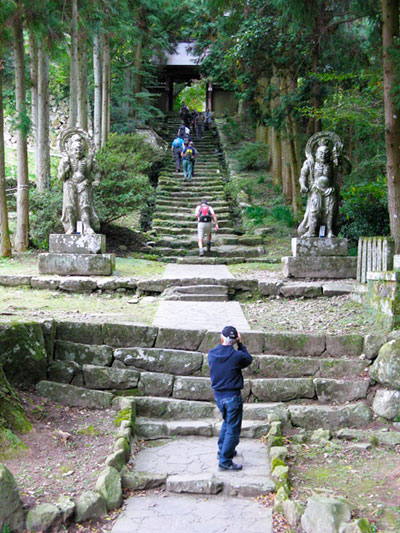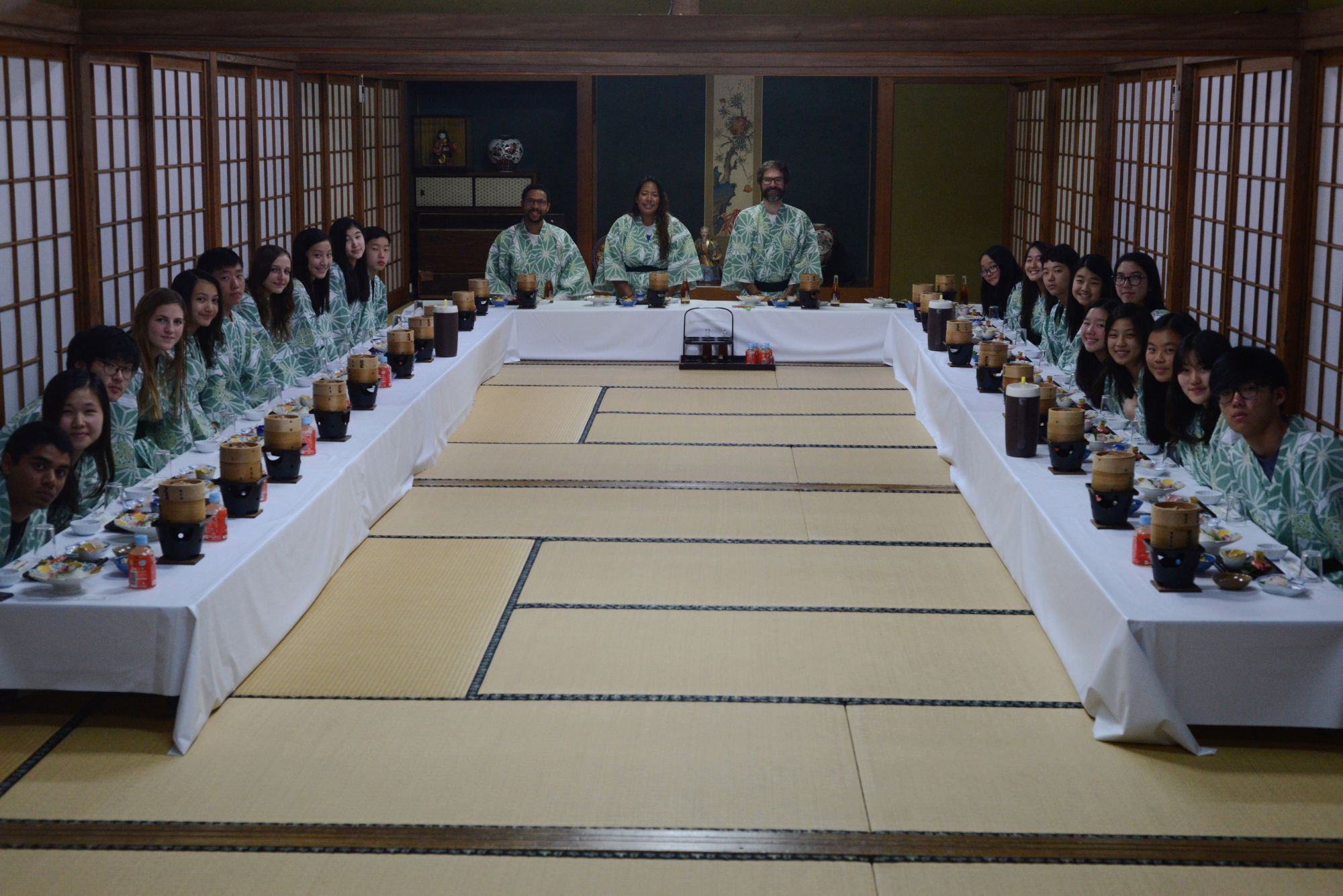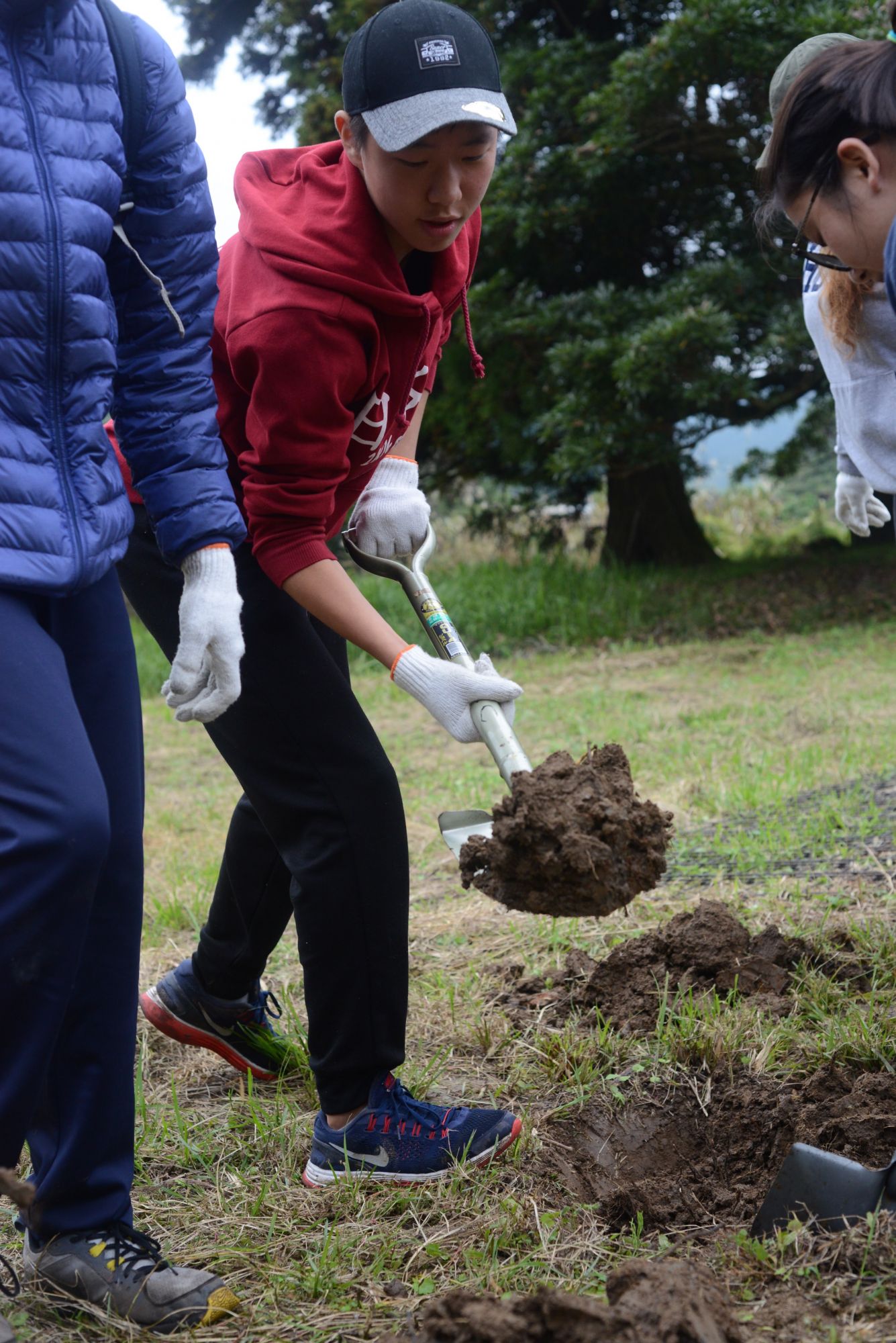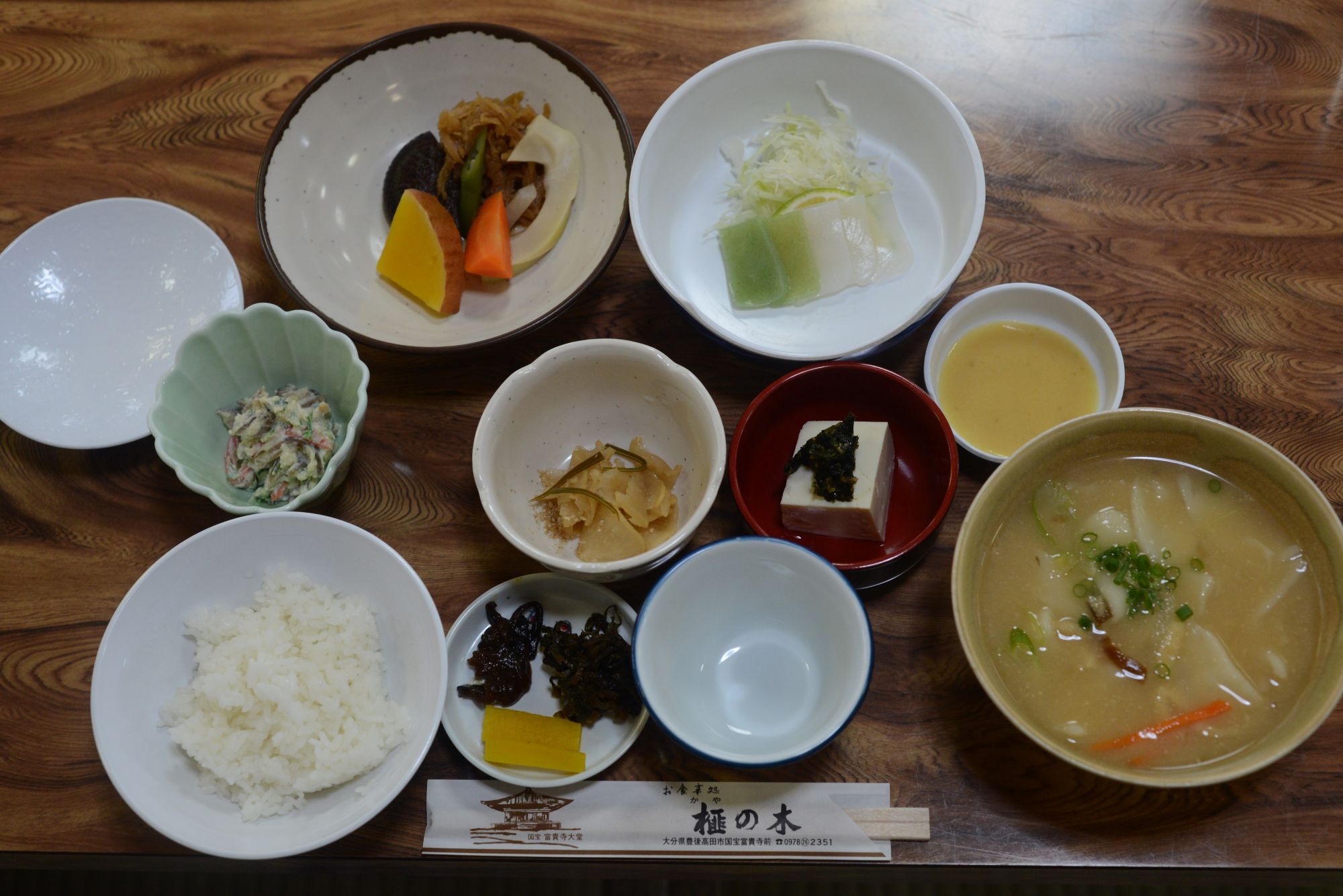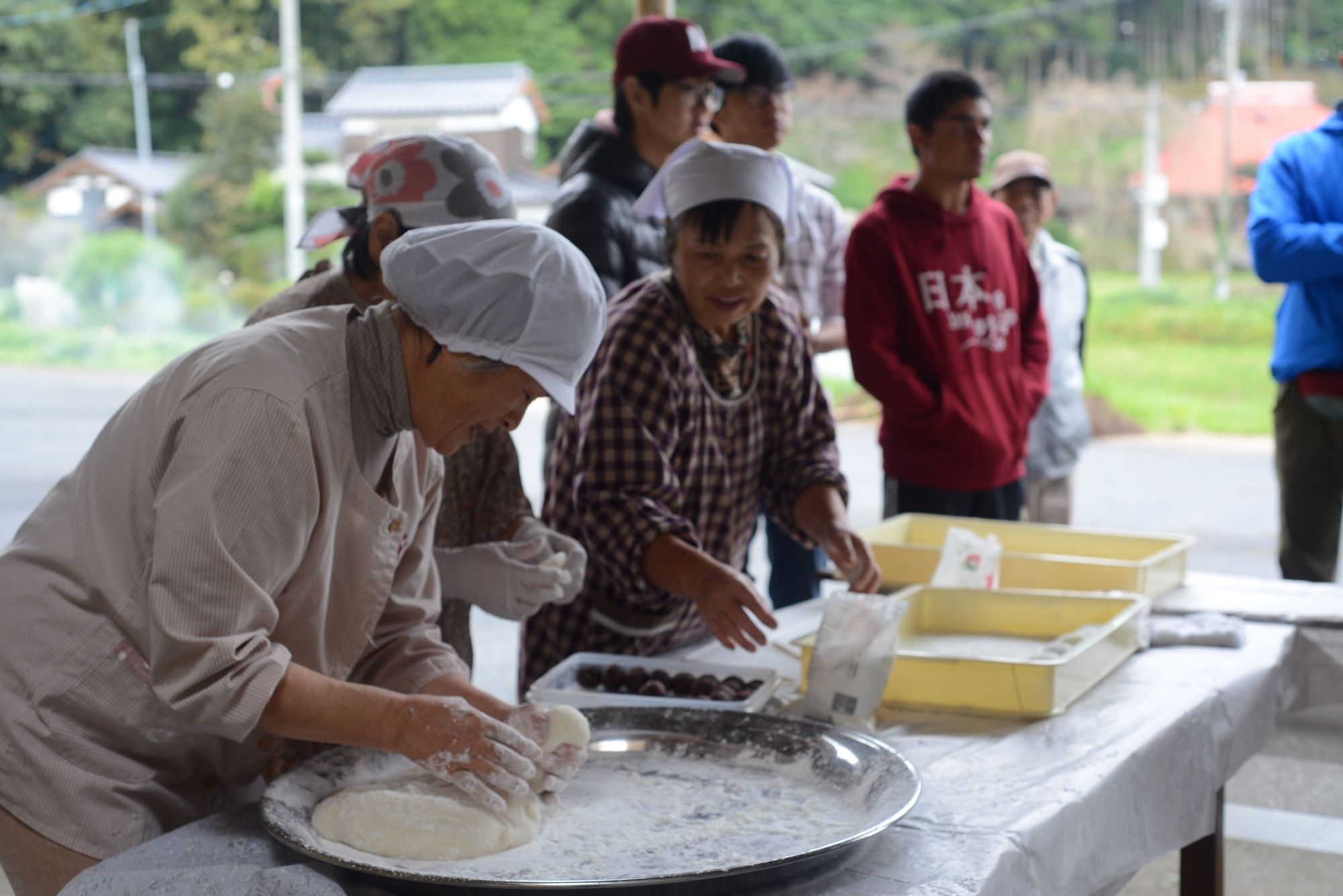A 7 day, 6 night tour starting and finishing in Fukuoka. Walk Japan adapts its trips for group size and age and welcomes groups of any size and students of any age. Currently, for our school trips the groups vary in size from 12 to 60 students and in age from 12 years to post-graduate university students.
Walk Japan’s School Programme in Kunisaki immerses students in the rich traditions and enchanting beauty of rural Japan. In this remote corner of Kyushu island, we venture through delightful hamlets where opportunities are provided for students to engage with and make an active contribution to the local community. Students assist in a sustainable farming project, and try their hand at traditional crafts and making local delicacies. Together we follow ancient trails in the footsteps of itinerant monks, and learn of Rokugomanzan, a distinctive esoteric Buddhism founded in this region some 1,300 years ago. At one such temple, perched on the slopes of the peninsula’s highest mountain, a priest will guide us in a reflective zazen meditation session.
We enjoy the warm hospitality of our hosts at charming inns, and a homestay experience with a Japanese family offers further insights into the way of life of here. We round off the programme with a celebratory karaoke session and shopping experience in the city of Fukuoka.
Day 1 Fukuoka Airport - Ota
After arrival at Fukuoka Airport we transfer by coach for the Kunisaki Peninsula,
which is about a 2.5 hour drive away. We first visit the impressive Usa Jingu shrine, a singularly Japanese environment and the source over 1,200 years ago of the religious development on Kunisaki. A short drive from Usa and we arrive in Ota, a quiet village deep in the Japanese countryside. Our accommodation comprises of chalets atop a small, remote mountain and we stay here for the next two nights. A briefing on Kunisaki and our programme is accompanied by an exploration of our surroundings, which includes the atmospheric remains of a old temple. For dinner we walk to a neighbouring restaurant, where we are served delicious farmhouse cuisine.
Accommodation: Log cabins.
Meals: Lunch and dinner provided.
Total walking: N/A.
Day 2 Ota
Today, we begin our community project work. Substantial parts of Japan’s native woodland habitat have been destroyed by large-scale uprooting of old forests and creating cedar plantations designed to supply lumber for the construction industry. Under these conditions the forest floor, starved of sunlight, becomes a barren environment where few other plants and wildlife are able to survive.
Today we assist in the recreation of a more diverse woodland ecosystem consisting of fruit and nut trees, bushes, vegetables, vines, medicinal plants and flowers. Activities include surveying, clearing undergrowth, planting trees and bushes, opening up old paths, creating wetlands and setting bird boxes. We will help rebuild a rich environment closer to the traditional countryside of Japan.
We also help a farming couple with the cultivation of shiitake mushrooms. Later on we use the crops to create dishes for our evening meal.
At the end of the day, we return to our accommodation, atop the hill, not far from where we have been working in the forests and fields. Here we try our hand at making soba buckwheat noodles. The soba is enjoyed with delicious Japanese style curry and rice for dinner. After enjoying the fruits of our labours we join in wadaiko Japanese drumming.
Accommodation: Log cabins
Meals: Breakfast, lunch & dinner provided.
Total walking: 6km (3.7 miles).
Day 3 Ota - Himeshima
After breakfast we meet Watanabe san and his colleagues in a local farming co-operative to help with and experience charcoal making. Charcoal was used heavily in rural Japan up until the 1970s for heating as well as cooking. Under their expert guidance, while helping with the work we learn of charcoal’s history and usage.
Next, we travel a short distance by bus to visit the towering Kumano Magaibutsu, which are 1,000 year-old, giant Buddhist relief carvings on the side of a cliff. It is a steep climb to reach them but well-worth the effort to see one of the best reminders of Kunisaki’s great religious history. We then transfer to Fuki-ji, which has one of the most beautiful Buddhist temple buildings in Japan. Lunch is dango-jiru, a delicious vegetarian dish famous in the area. From here we transfer by bus through the centre of Kunisaki to Imi Port. Hime-shima, a small island off Kunisaki’s north coast, is 20 minutes away by ferry. Our accommodation for the night is a Japanese inn, situated a short walk from the quay.
Upon our arrival, we take some time to learn the vital do’s and don’ts of living in the traditional Japanese style; Where do we take off our shoes? Where are the beds? How do we use the baths? The lessons learnt here are important, and will be vital later on during the tour when we stay with Japanese families. Have a look at the pages on Japanese etiquette in this handbook for some hints and tips.
Accommodation: Japanese inn.
Meals: Breakfast, lunch & dinner provided.
MTotal walking: 3km (1.9 miles).
Day 4 Himeshima – Akane Onsen
We return to Imi Port by ferry and then spend the morning here at a craft workshop. Activities include ikebana flower arrangement and Shittoi weaving. Following lunch, another walk this time through the extensive grounds of Kyu- Sento-ji, a once powerful temple. Two impressive Nio guardian deities, myriad gravestones, ancient stone walls and foundations are all that remain today.
A short climb brings us out at the ‘fortress rock’ peak of Itsusu-ji Fudo, which houses in its shadow a small shrine room. This provides spectacular views across Kunisaki, the Seto Inland Sea and Himeshima. Descending from here, we are met by a bus and taken to our nearby accommodation, which includes a Japanese favourite; onsen thermal hot spring baths. Bathing is divided into male and female.
Accommodation: Japanese inn
Meals: Breakfast, lunch & dinner provided.
Total walking: 2.5km(1.6 miles).
Day 5 Akane Onsen – Futagoji - Bungotakada
This morning we visit Futago-ji, the most important temple in Kunisaki. Here we try zazen Buddhist sitting meditation under the friendly guidance of Gojun-san, the young priest of the temple. Gojun-san will also show us around the extensive grounds of his lovely temple and introduce us to the religious history of Kunisaki area.
We then transfer to Bungotakada to enjoy lunch at a local restaurant. Afterwards we have some time to stroll around this small town, which has a pleasant post-war period charm. Here we are divided into small groups to meet local Japanese families, who we will be staying with until tomorrow morning. This is always a great opportunity for getting to know the Japanese and their culture at first hand.
Accommodation: Homestay.
Meals: Breakfast, lunch & dinner provided.
Total walking: N/A.
Day 6 Bungotakada - Fukuoka
After breakfast we gather with our farmstay families in Bungo-Takada for a
farewell ceremony. We set off for Fukuoka by bus, eating lunch en route before
arriving at Dazaifu and its elegant Shinto shrine, which was first built in 905AD. Appropriately, it enshrines Tenjin, the Japanese god of learning. Some time in Dazaifu to explore the shops for souvenirs.
Finally we reach Fukuoka and after dinner we partake in a Japanese favourite, karaoke, for a celebratory end to our tour.
Accommodation: Western-style business hotel.
Meals: Breakfast, lunch & dinner provided.
Total walking: N/A
Day 7 Fukuoka - Home
Early morning transfer after breakfast to Fukuoka Airport before our flight back home.
Accommodation: N/A.
Meals: Breakfast provided.
Total walking: N/A
This itinerary is subject to change.



